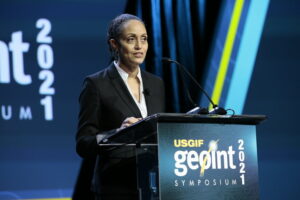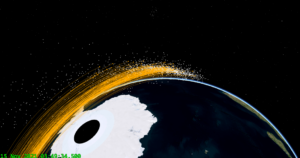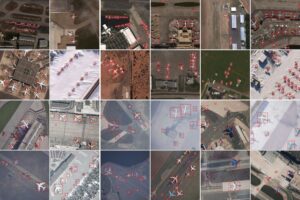NASA Chief expects cooperation with Russia on ISS to continue
Wednesday, 27 April 2022 06:42 NASA Administrator Bill Nelson said on Thursday that he has full confidence Russia will extend its cooperation with the United States on the International Space Station (ISS) based on the continuing close cooperation and warm personal relations between crews from both countries and their control teams back on earth.
"I see the friendliness between the two crews. I have that confidence that
NASA Administrator Bill Nelson said on Thursday that he has full confidence Russia will extend its cooperation with the United States on the International Space Station (ISS) based on the continuing close cooperation and warm personal relations between crews from both countries and their control teams back on earth.
"I see the friendliness between the two crews. I have that confidence that Back Through the Buttes! Sols 3456-3457
Wednesday, 27 April 2022 06:42 Our weekend drive brought us successfully to our planned stop. The priority in this Touch and Go drive plan is to image the buttes which surround us. Mastcam will image "Blackcraig" and "Maringma" buttes which lie on our left and right respectively as we continue to head down from the pediment, and "Deepdale" butte which is ahead of us in the distance.
Although we have imaged Blackcraig an
Our weekend drive brought us successfully to our planned stop. The priority in this Touch and Go drive plan is to image the buttes which surround us. Mastcam will image "Blackcraig" and "Maringma" buttes which lie on our left and right respectively as we continue to head down from the pediment, and "Deepdale" butte which is ahead of us in the distance.
Although we have imaged Blackcraig an Enigmatic rocks on Mars show evidence of a violent origin
Wednesday, 27 April 2022 06:42 Determining the history of Mars, how it formed and evolved over time, has been a goal of both orbiter and rover missions to the Red Planet for decades. Analyzing data from several of these Mars missions, a team of researchers led by Steve Ruff of Arizona State University's School of Earth and Space Exploration has determined that enigmatic olivine-rich bedrock in Gusev crater and in and around J
Determining the history of Mars, how it formed and evolved over time, has been a goal of both orbiter and rover missions to the Red Planet for decades. Analyzing data from several of these Mars missions, a team of researchers led by Steve Ruff of Arizona State University's School of Earth and Space Exploration has determined that enigmatic olivine-rich bedrock in Gusev crater and in and around J Chinese research institutions set to receive 4th batch of lunar samples
Wednesday, 27 April 2022 06:42 China has announced a list of research institutions that are set to receive the fourth batch of lunar samples brought back by the country's Chang'e-5 mission.
The samples, which weigh 8.768 grams, will be distributed to scientists at 11 research institutions, according to a notice issued by the Lunar Exploration and Space Program Center of the China National Space Administration.
The
China has announced a list of research institutions that are set to receive the fourth batch of lunar samples brought back by the country's Chang'e-5 mission.
The samples, which weigh 8.768 grams, will be distributed to scientists at 11 research institutions, according to a notice issued by the Lunar Exploration and Space Program Center of the China National Space Administration.
The Microrobot collectives display versatile movement patterns
Wednesday, 27 April 2022 06:42 Researchers at the Max Planck Institute for Intelligent Systems (MPI-IS), Cornell University and Shanghai Jiao Tong University have developed collectives of microrobots which can move in any desired formation. The miniature particles are capable of reconfiguring their swarm behavior quickly and robustly. Floating on the surface of water, the versatile microrobotic discs can go round in circles,
Researchers at the Max Planck Institute for Intelligent Systems (MPI-IS), Cornell University and Shanghai Jiao Tong University have developed collectives of microrobots which can move in any desired formation. The miniature particles are capable of reconfiguring their swarm behavior quickly and robustly. Floating on the surface of water, the versatile microrobotic discs can go round in circles, Carbon dioxide glaciers are moving at the Martian south pole
Wednesday, 27 April 2022 06:42 Glaciers of carbon dioxide are moving, creating deposits kilometers thick today across the south polar region of Mars, something that could have been going on more than 600,000 years, a paper by Planetary Science Institute Research Scientist Isaac Smith says.
"The CO2 deposits that were first identified in 2011 turn out to be flowing today, just like glaciers on Earth," said Smith, lead au
Glaciers of carbon dioxide are moving, creating deposits kilometers thick today across the south polar region of Mars, something that could have been going on more than 600,000 years, a paper by Planetary Science Institute Research Scientist Isaac Smith says.
"The CO2 deposits that were first identified in 2011 turn out to be flowing today, just like glaciers on Earth," said Smith, lead au Scientists find DNA's code for life in meteorites
Wednesday, 27 April 2022 06:42 New evidence found in meteorites suggests the ingredients for life came from space.
Scientists at NASA and in Japan confirmed Tuesday they found all five key building blocks of DNA and RNA in space rocks that fell to Earth within the last 100 years, according to research published in the journal Nature Communications.
Astrochemist Daniel Glavin at NASA's Goddard Space Flight Cent
New evidence found in meteorites suggests the ingredients for life came from space.
Scientists at NASA and in Japan confirmed Tuesday they found all five key building blocks of DNA and RNA in space rocks that fell to Earth within the last 100 years, according to research published in the journal Nature Communications.
Astrochemist Daniel Glavin at NASA's Goddard Space Flight Cent NASA Chief slams China's refusal to cooperate with US
Wednesday, 27 April 2022 06:42 China continues to display a lack of transparency and willingness to cooperate with the United States and other countries in space, NASA Administrator Bill Nelson said on Tuesday.
"We want cooperation that has not been forthcoming from the Chinese government (but) it takes two to tango," Nelson told a press conference at the Kennedy Space Center in Florida. "We simply haven't had any trans
China continues to display a lack of transparency and willingness to cooperate with the United States and other countries in space, NASA Administrator Bill Nelson said on Tuesday.
"We want cooperation that has not been forthcoming from the Chinese government (but) it takes two to tango," Nelson told a press conference at the Kennedy Space Center in Florida. "We simply haven't had any trans NASA selects investigation teams to join Geospace Dynamics Mission
Wednesday, 27 April 2022 06:42 NASA has selected three investigation teams to join the agency's Geospace Dynamics Constellation (GDC) mission science team in studying Earth's upper atmosphere, as well as five additional investigations that will be under consideration for inclusion in the mission.
GDC is a coordinated group of satellites that will provide the first direct global measurements of the dynamic and complex re
NASA has selected three investigation teams to join the agency's Geospace Dynamics Constellation (GDC) mission science team in studying Earth's upper atmosphere, as well as five additional investigations that will be under consideration for inclusion in the mission.
GDC is a coordinated group of satellites that will provide the first direct global measurements of the dynamic and complex re UAE vows 'responsible' artificial intelligence rollout
Wednesday, 27 April 2022 06:42 The world's first minister for artificial intelligence says the United Arab Emirates isn't only looking for economic benefits as it seeks to become a leading nation in the sector.
The UAE's minister of state for AI, Omar bin Sultan al-Olama, said "quality of life" considerations were key, and also stressed the importance of a "responsible" rollout - with impacts potentially reverberating fo
The world's first minister for artificial intelligence says the United Arab Emirates isn't only looking for economic benefits as it seeks to become a leading nation in the sector.
The UAE's minister of state for AI, Omar bin Sultan al-Olama, said "quality of life" considerations were key, and also stressed the importance of a "responsible" rollout - with impacts potentially reverberating fo Dixon calls for greater transparency and data interoperability
Tuesday, 26 April 2022 22:41
Russia's invasion of Ukraine is underscoring the need to fuse intelligence datasets, like geospatial intelligence, signals intelligence, human intelligence, said Stacey Dixon, U.S. deputy director of national intelligence.
The post Dixon calls for greater transparency and data interoperability appeared first on SpaceNews.
Op-ed | Russia’s war could spread to space, the U.S. should be prepared
Tuesday, 26 April 2022 21:00
The satellites on which the data for the blue dot on your phone, nearly every global financial transaction, and the effectiveness of military forces relies, are not beyond Russian reach.
The post Op-ed | Russia’s war could spread to space, the U.S.
Op-ed | Russia’s war could spread to space; the U.S. should be prepared
Tuesday, 26 April 2022 21:00
The satellites on which the data for the blue dot on your phone, nearly every global financial transaction, and the effectiveness of military forces relies, are not beyond Russian reach.
The post Op-ed | Russia’s war could spread to space; the U.S.
Synthetic data helps train algorithms to spot rare objects
Tuesday, 26 April 2022 20:54
Computer vision models only work after they have ingested extensive data of various objects, which is not always available.
The post Synthetic data helps train algorithms to spot rare objects appeared first on SpaceNews.
Ligado Networks critics step up opposition as service launch nears
Tuesday, 26 April 2022 18:50
Ligado Networks faces renewed calls to block its terrestrial wireless plans over GPS interference concerns as the company prepares to turn part of its network on as early as Sept. 30.

